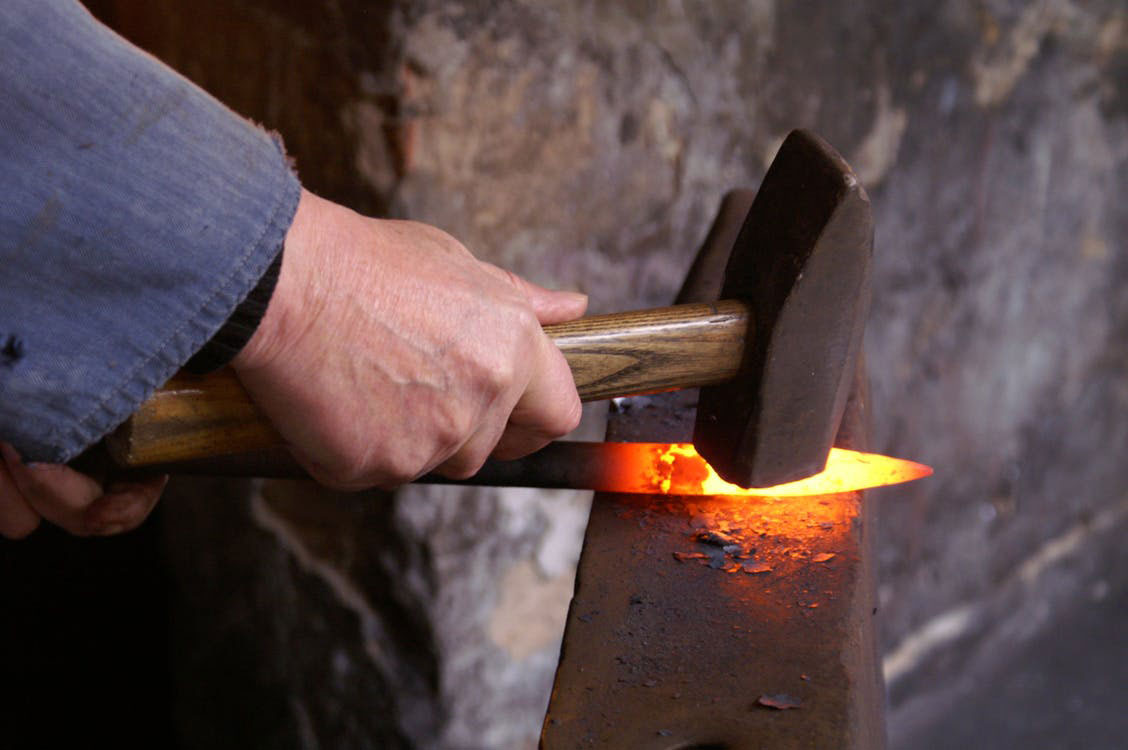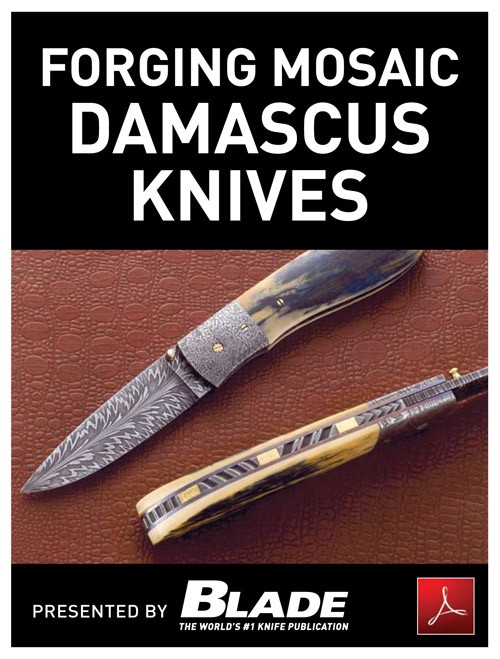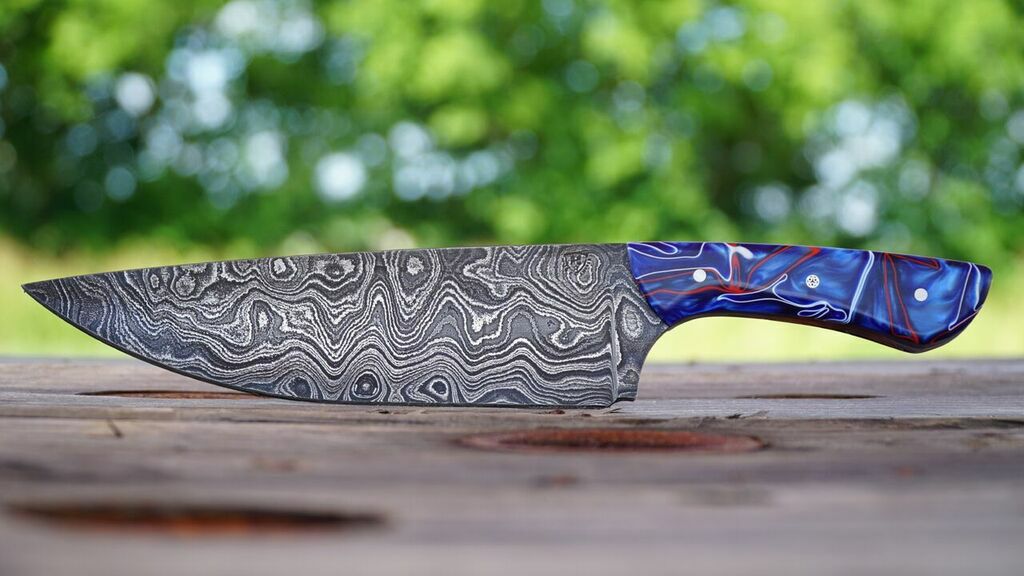
Veteran collectors discuss what to look for in a top knifemaker.
When it comes to spending your hard-earned dollar, knowing what to look for in a knifemaker provides a perspective that can’t be achieved any other way. The knife itself offers a real, tangible opportunity to assess the workmanship, and a dialogue with the maker—or at least some knowledge of his or her career and standing in the knife community at large—allows for informed decision-making.
“The main thing I look for in a knifemaker is someone with an original design aesthetic,” observed longtime collector Jim Berkenfield. “I always tell up-and-coming makers that they want to create something that can be immediately identified as theirs if it is sitting on a table in the middle of 100 other knives.”
Meanwhile, being mentored by a leading maker is not something Jim looks for in a maker.

“I don’t necessarily think a maker needs to have some well-known mentor or instructor,” he opined. “These days, savvy and creative people can access all the information they need via social media or the internet to get them started down the road to knifemaking.”
The first impression is key to developing any relationship, and finding a maker with his or her own creative voice is an essential component for many.
“Firstly, and most obvious, I have to be drawn to the maker’s work, assuming I don’t really have any previous interaction with the maker,” collector Chris Schluter said. “I think these days social media is certainly an easy and quick way to get some information. There are countless knife groups on Facebook, for example. One could ask in these groups if anyone has had experience with a certain maker or knives. Of course, doing this in person at a show is an option as well.”
Personal Interaction With Knifemakers

Larry Hirsch, a veteran collector of Lloyd Hale’s work and that of other classic custom makers, sees the value in social media but also understands the benefits of personal interaction across the table at a show.
“I think it’s important for makers to attend knife shows,” he commented. “Meeting people, talking about their work, hobbies, family, ideas, networking and making friends is all part of a successful business. I’ve bought knives from makers that I’ve met at shows and become friends with. I’ve sold off knives from makers that were rude to me at shows.”
Consequently, there is more than just an exchange of cash for steel in the building of a mutually beneficial relationship between maker and customer. Even though it may sometimes be difficult for a maker to attend a show, there are still opportunities to interact.
“I don’t think it’s mandatory for makers to attend shows because knife shows are expensive,” Berkenfield said. “For new knifemakers in particular there is no guarantee that they’ll even sell anything. When a maker is exhibiting at a show, yes, I think it’s important that he engages with people as they walk by—without being pushy. I think the biggest reason knifemakers should try to attend shows is to gain inspiration from other work in the room, acquire materials, and just make some contacts in the industry.”

It’s entirely possible that young makers seeking to establish themselves could complement their use of social media such as Instagram with regular visits to shows. Visibility is a key in promoting a knifemaking career.
“It’s very important for a newer unknown knifemaker to attend shows,” Schluter advised. “A show is a great opportunity to get feedback on your knives and also check out other knives and speak to other makers for tips and inspiration. I think that this is probably best done in conjunction with a social media presence so any customers or followers know where they can handle some knives ‘live.’”
SPECIAL ORDERS
When a potential buyer wants a special order or the maker has a waiting list, it makes sense to weigh the dynamics of the situation, including whether the maker takes custom orders and whether he or she requires a deposit.
Schluter remarked, “Many say that a true custom knife is a knife made to a customer’s specifications with specific materials. Many makers will do this, of course. However, many makers, especially very ‘in-demand’ ones, will just make what they want and it will sell. And customers will be happy to get anything from that maker. As far as waiting lists and order books go, it’s really up to the maker and not the customer. Someone told me once long ago, ‘There’s real time and there’s knifemaker time.’”

“If a maker says six months, don’t be surprised if it’s a lot longer,” Chris cautioned. “Many makers who are popular simply don’t take orders anymore, though it never hurts to ask nicely even though they state this. Others who do take orders will regularly have wait times in excess of a year. It’s not unheard of to wait several years! I generally don’t like deposits or paying in advance. A small deposit as a sign of good faith or for special materials is not out of the question, though.”
Hirsch doesn’t see a willingness to take custom orders as critical, but he does emphasize the need to manage expectations.
“I have talked to many knifemakers about this, and the ones that don’t take orders have valid reasons for not taking orders,” he explained. “I’ve had the pleasure of working with several knifemakers that do take custom orders and enjoyed the knives that they made for me. Before you ever place an order, you need to ask the maker about the things that are important to you and receive the answers that you want.
“The timeframe for receiving your knife should be reasonable based on the maker’s backlog,” Larry added. “I suggest that if you don’t have the patience to wait longer than expected, don’t custom order a knife. It almost always takes longer than promised or expected.

“Deciding on placing a deposit is a very personal decision. Sometimes everything goes perfectly and you’re happy about your decision. Sometimes life, sickness or death prevent a maker from starting or completing your project, and your deposit is lost. When you deal with an individual, it’s not like a factory. There’s no one to take over when the knifemaker is sick or gone, and there’s no company to call to complain or ask for a refund.”
Berkenfield says that depending on the knifemaker it isn’t uncommon to wait two years for a custom knife to be delivered, particularly if the maker is well known and has a following.
“When you’re collecting knives, you need to play the long game in terms of acquiring a piece from a specific maker,” he commented. “Typically, deposits are not required, although if the build has certain expensive materials, for example, mammoth ivory, I will often offer to pay for that in advance or even to provide it myself.”
Questions To Ask
A prospective buyer should not be afraid to ask a maker specific questions about the maker’s operation, a certain knife, or what the prospective buyer’s expectations should be as the proud owner of one of the maker’s pieces.

“I think it’s always good to ask a maker you’re not familiar with but interested in how they got into knifemaking,” Schluter recommended. “How long have they been making knives? Why do they enjoy it? Most custom knives are not inexpensive, and I think it’s perfectly reasonable to want to know about the maker. As many have said, ‘You buy the maker, not the knife!’”
Knowledge is power and Hirsch suggests that prospective customers invest in some research of their own before contacting a maker who interests them.
“There’s typically a wealth of information available online,” he related. “Ask other collectors their opinions. Find out the knifemaker’s preferred method of communication and what hours they are available to communicate with you. Remember that when you are talking with them during working hours you are taking them away from making knives. Be respectful of their time.”
Communication is a two-way street, so what is appropriate in terms of responsiveness from the maker?

“Like any business, there is a customer service aspect,” Schluter acknowledged. “Someone who is unresponsive to a sales inquiry might also be unresponsive if there’s a problem with a knife in the future. Of course, there’s the whole ‘knifemaker time’ thing so don’t expect Nordstrom-like customer service, either. For a knifemaker, I generally like to hear back from them within a few days to a week.”
Other Tells Of Good Knifemakers
Other tells of a maker’s work and business conduct might include the existence of a dedicated website; the inclusion of a sheath in the purchase of a fixed blade; the potential cross-over of a knife from everyday carry and field use to the collector’s case, and vice versa; and the relative cost of the piece in comparison to the popularity of the man or woman who made it may all weigh proportionally on the eventual appeal of a maker to the buyer. Some conditions, after all, will always remain subjective.
In the end, a prospective customer and his or her maker of choice should be able to accommodate one another, striking a balance in mutual respect and appreciation for their common interest. Communication is an important part of any relationship or business transaction. When a healthy give and take is present, both parties will tend to be more satisfied with the outcome of a discussion and, hopefully, a satisfied buyer and seller.
More On Custom Knives:
- Eastern European Custom Knives
- Latin Americab Custom Knife Makers
- What Do Judges Look At In Custom Knife Competitions?
- What Defines The Best Custom Hunting Knives?
 NEXT STEP: Download Your Free KNIFE GUIDE Issue of BLADE Magazine
NEXT STEP: Download Your Free KNIFE GUIDE Issue of BLADE Magazine
BLADE’s annual Knife Guide Issue features the newest knives and sharpeners, plus knife and axe reviews, knife sheaths, kit knives and a Knife Industry Directory.Get your FREE digital PDF instant download of the annual Knife Guide. No, really! We will email it to you right now when you subscribe to the BLADE email newsletter.






